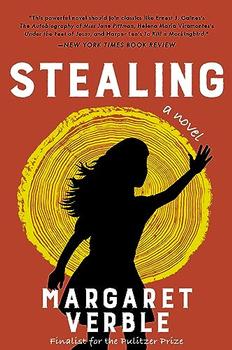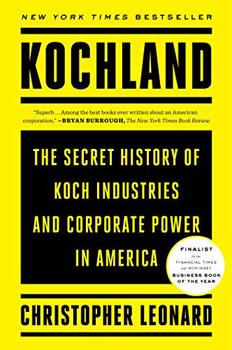Summary | Excerpt | Reviews | Beyond the book | Read-Alikes | Genres & Themes | Author Bio

An American Story of a Poisoned Land and a People Betrayed
by Judy PasternakYellow Dirt offers readers a window into a dark chapter of modern history that still reverberates today, weaving the personal and the political into a tale of betrayal, of willful negligence, and, ultimately, of reckoning.
Atop a craggy mesa in the northern reaches of the Navajo reservation lies what was once a world-class uranium mine called Monument No. 2. Discovered in the 1940s—during the government's desperate press to build nuclear weapons—the mesa's tremendous lode would forever change the lives of the hundreds of Native Americans who labored there and of their families, including many who dwelled in the valley below for generations afterward.
Yellow Dirt offers readers a window into a dark chapter of modern history that still reverberates today. From the 1940s into the early twenty-first century, the United States knowingly used and discarded an entire tribe for the sake of atomic bombs. Secretly, during the days of the Manhattan Project and then in a frenzy during the Cold War, the government bought up all the uranium that could be mined from the hundreds of rich deposits entombed under the sagebrush plains and sandstone cliffs. Despite warnings from physicians and scientists that long-term exposure could be harmful, even fatal, thousands of miners would work there unprotected. A second set of warnings emerged about the environmental impact. Yet even now, long after the uranium boom ended, and long after national security could be cited as a consideration, many residents are still surrounded by contaminated air, water, and soil. The radioactive "yellow dirt" has ended up in their drinking supplies, in their walls and floors, in their playgrounds, in their bread ovens, in their churches, and even in their garbage dumps. And they are still dying.
Transporting readers into a little-known country-within-a-country, award-winning journalist Judy Pasternak gives rare voice to Navajo perceptions of the world, their own complicated involvement with uranium mining, and their political coming-of-age. Along the way, their fates intertwine with decisions made in Washington, D.C., in the Navajo capital of Window Rock, and in the Western border towns where swashbuckling mining men trained their sights on the fortunes they could wrest from tribal land, successfully pressuring the government into letting them do it their way.
Yellow Dirt powerfully chronicles both a scandal of neglect and the Navajos' long fight for justice. Few had heard of this shameful legacy until Pasternak revealed it in a prize-winning Los Angeles Times series that galvanized a powerful congressman and a famous prosecutor to press for redress and repair of the grievous damage. In this expanded account, she provides gripping new details, weaving the personal and the political into a tale of betrayal, of willful negligence, and, ultimately, of reckoning.
Yellow Dirt is a work of the highest quality journalism, an exposé made possible by meticulous research... She has taken a large cast of characters, a bulging list of corporations and government agencies, and a scientific subject and managed to unite them in a story that the average reader can comprehend... This book is a solemn reminder of what harm can result when governments act in haste and fear and business decisions are based solely on profit. The "American story" of Yellow Dirt is a piece of recent history that could not be more relevant today...continued
Full Review
 (537 words)
(537 words)
(Reviewed by Stacey Brownlie).
The Navajo Nation is a semi-autonomous political and cultural entity within the United States which covers northeastern Arizona, northwestern New Mexico and parts of southeastern Utah. This is part of the area known as the Four Corners region, where the borders of Colorado, New Mexico, Arizona and Utah meet, which became USA territory in 1848 after the Mexican American War. At about 26,000 square miles it is the largest land area assigned primarily to a Native American jurisdiction in the USA, and larger than 10 of the 50 states. The Navajo people refer to themselves as Diné ("the people"); Navajo is a Spanish word. The center of government for Diné Bikéyah (Navajoland) is in Window Rock, Arizona.
The basis of ...

If you liked Yellow Dirt, try these:

by Margaret Verble
Published 2024
A gripping, gut-punch of a novel about a Cherokee child removed from her family and sent to a Christian boarding school in the 1950s—an ambitious, eye-opening reckoning of history and small-town prejudices from Pulitzer Prize finalist Margaret Verble.

by Christopher Leonard
Published 2020
Just as Steve Coll told the story of globalization through ExxonMobil and Andrew Ross Sorkin told the story of Wall Street excess through Too Big to Fail, Christopher Leonard's Kochland uses the extraordinary account of how one of the biggest private companies in the world grew to be that big to tell the story of modern corporate America.